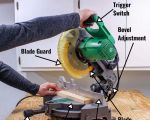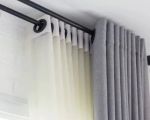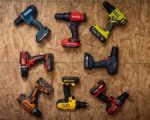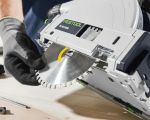- Why You Need an Outdoor Extension Cord
- Factors to Consider When Choosing Extension Cords
- Types of Extension Cords for Outdoor Projects
- Safety Tips for Using Outdoor Extension Cords
- Real-Life Experience with the Right Extension Cord
1. Why You Need an Outdoor Extension Cord
When working on outdoor projects, having the right extension cord is essential to powering your tools and equipment safely and efficiently. Standard indoor extension cords are not designed to handle the elements, and using them outside can lead to a variety of issues, such as electrical hazards, reduced functionality, or even damaged equipment.
Outdoor extension cords are specifically designed to handle tougher conditions, including exposure to sunlight, rain, and temperature fluctuations. Whether you're trimming the lawn, powering your outdoor lights, or using power tools for a DIY project, selecting the right extension cord for the job ensures that your equipment works as it should while staying safe.
In this article, we’ll dive into how to choose the best extension cord for outdoor use and share tips for ensuring that your electrical setup is both effective and secure during your outdoor activities.
2. Factors to Consider When Choosing Extension Cords
Choosing the right extension cord for outdoor projects depends on several key factors. By understanding what to look for in an extension cord, you can make an informed decision that will best meet the demands of your project.
1. Length of the Extension Cord
One of the first things to consider when selecting an extension cord is the length. If the cord is too short, you may find yourself unable to reach your power tools or equipment. On the other hand, an overly long extension cord may create a tripping hazard or waste energy.
Measure the distance between your power source and the area where you need to use the equipment, and choose a cord that provides some extra length to avoid strain on the cord. A good rule of thumb is to choose an extension cord that’s about 20% longer than what you think you’ll need.
2. Gauge and Power Rating (Ampacity)
The gauge of the extension cord refers to the thickness of the wire inside the cord. A lower gauge number indicates a thicker wire, which can carry more current. For outdoor projects that require significant power, a thicker cord (lower gauge) is preferable as it will reduce the risk of overheating and voltage drop.
For light-duty outdoor use, such as powering lights or small equipment, a 16-gauge cord might be sufficient. However, for high-power tools like lawnmowers or power drills, look for a cord with a 12 or 14-gauge wire to ensure safe and efficient operation.
3. Weather Resistance
Outdoor extension cords are exposed to the elements, so it’s critical to choose a cord with weather-resistant properties. Look for cords that are specifically rated for outdoor use and have features like UV protection, water resistance, and durable insulation. These cords will stand up to the rigors of outdoor conditions, including rain, sun exposure, and fluctuating temperatures.
4. Durability and Insulation
Outdoor extension cords are often subjected to rough handling, so durability is an essential factor to consider. Look for cords that are designed with extra-heavy-duty insulation to protect the internal wiring from abrasions, cuts, and other damage. Some cords feature reinforced coverings that make them more resistant to wear and tear, ensuring a longer lifespan for your extension cord.
3. Types of Extension Cords for Outdoor Projects
There are several types of extension cords designed for outdoor use, each with its own advantages. Let’s explore the different options to help you choose the best one for your project:
1. Standard Outdoor Extension Cords
Standard outdoor extension cords are typically designed to handle medium-duty applications like powering outdoor lights or small power tools. These cords usually have a 16- or 14-gauge wire and are built to withstand the elements. They are ideal for projects that don’t require heavy machinery but need a reliable, durable extension cord.
2. Heavy-Duty Outdoor Extension Cords
Heavy-duty outdoor extension cords are designed to handle more demanding tasks, such as powering large equipment, electric lawnmowers, or other high-power tools. These cords typically feature a 12-gauge or 10-gauge wire and are equipped with reinforced insulation for added protection against wear and tear. They’re built to resist exposure to extreme weather conditions and can carry a higher amperage, making them suitable for professional-grade outdoor projects.
3. Retractable Extension Cords
If you frequently use an extension cord for outdoor projects, a retractable extension cord might be a convenient choice. These cords come with a built-in reel that allows you to easily extend and retract the cord without tangling. Retractable extension cords are especially useful for large yards or projects that require frequent movement of the cord. They are available in both standard and heavy-duty versions.
4. Outdoor Extension Cords with Multiple Outlets
For larger outdoor projects, you may need to power several tools or equipment simultaneously. In this case, an outdoor extension cord with multiple outlets can be extremely useful. These cords have built-in outlets at the end, allowing you to plug in several devices at once, which can save you time and effort when working on extensive tasks like landscaping or construction.
4. Safety Tips for Using Outdoor Extension Cords
While outdoor extension cords are designed to handle tougher conditions, it’s essential to use them properly to avoid hazards. Here are some key safety tips to keep in mind:
1. Keep Cords Dry
Always ensure that your extension cord remains dry when using it outdoors. Water exposure can lead to short circuits or electrocution. Avoid using cords in puddles or wet areas, and always make sure the cord is securely plugged into dry sockets.
2. Avoid Overloading
Overloading an extension cord can lead to overheating and potentially cause a fire. Always check the power rating of your extension cord and ensure it matches or exceeds the power requirements of the devices you plan to use. Never connect multiple cords together in a chain, as this can increase the risk of an overload.
3. Store Properly
After use, always store your outdoor extension cord properly. Coil the cord neatly and store it in a dry, cool place to prevent damage to the insulation. Avoid leaving the cord outside for long periods, as prolonged exposure to the elements can degrade its quality.
4. Inspect for Damage
Before using your extension cord, always inspect it for visible damage, such as fraying, cuts, or exposed wires. If you notice any issues, replace the cord immediately to prevent electrical hazards.
5. Real-Life Experience with the Right Extension Cord
Meet James, an avid DIY enthusiast who enjoys working on outdoor projects around his home. James often uses a heavy-duty outdoor extension cord for powering his lawnmower, hedge trimmer, and other tools. By choosing a 12-gauge extension cord with weather-resistant insulation, James has been able to avoid the overheating issues that he previously faced with lighter-duty cords. This has allowed him to complete large landscaping projects without worrying about power loss or electrical safety. His careful choice of extension cord has made all the difference in ensuring his tools perform optimally and safely during outdoor work.
6. Conclusion
Choosing the right extension cord for your outdoor projects is essential for both safety and efficiency. By considering factors such as length, gauge, weather resistance, and the specific demands of your project, you can select an extension cord that ensures smooth and safe operation of your tools and equipment. Always prioritize safety by properly storing your cords, inspecting for damage, and avoiding overloads.
For more advice and recommendations on the best extension cords for outdoor use, visit ToolNest for expert product suggestions tailored to your needs.









